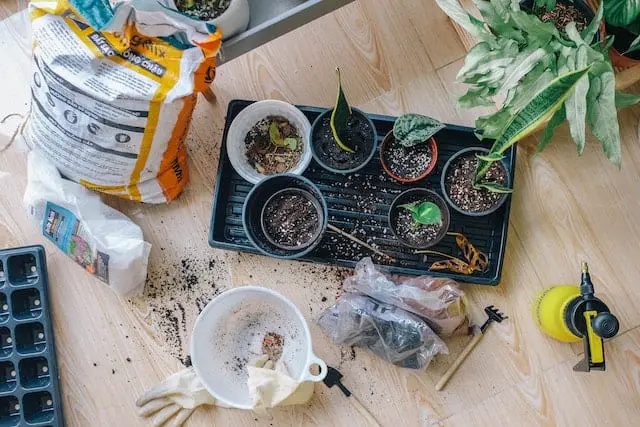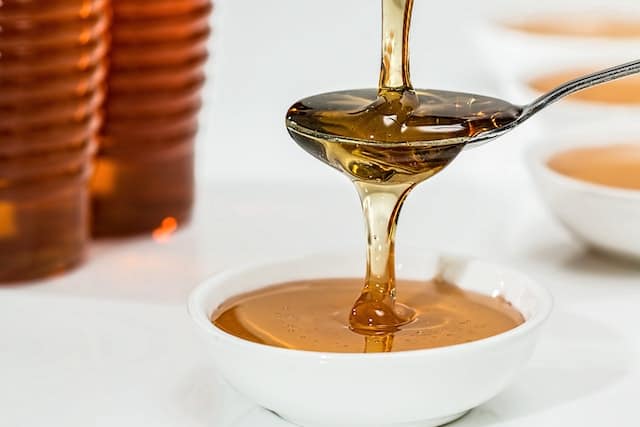One of the little things that make gardeners happy is seeing their succulents grow beautifully and healthily. Therefore, knowing how to propagate succulents with honey is a fantastic idea.
Although there are many rooting hormones out there, some of them can damage your healthy plant. Honey is not only cheap, but it also prevents bacteria and fungi from growing on your succulents. In addition to being a natural and cost-effective alternative to rooting hormones, using honey to propagate succulents also provides a gentle and safe method for beginners.
In this article, we will discuss the propagation of succulents with honey. Now, let’s get started!
How To Propagate Succulents With Honey

While there are many ways of propagating succulent cuttings, the most common ones are by using water and soil. But one of the disadvantages of water propagation is root rot.
Using the soil propagation method is preferable, but it can take a longer time. This is why it is advisable to use rooting hormones to speed up the growth process.
Bear in mind that the most appropriate time for propagation is late summer, as the plants will be dormant. Another time to consider is the early spring when fresh plants are growing.
That said, here are simple steps to propagate your succulents using honey:
Step 1: Get Your Leaf or Stem Cuttings
The two ways in which you can propagate your succulents are by using leaf or stem cuttings from a healthy plant.
When using the leaf propagation method, get two to three leaves from a mature plant. Collect the leaves you want to propagate carefully to avoid damaging the other leaves. If the leaves are difficult to remove by hand, use a sanitized pair of scissors to cut them off.
If you’re planning to use the stem cutting method, it’s an easy process. Using sterilized scissors or other equipment, cut off the stem from a mature plant, preferably above the leaf node. Only take what you need from the mother plant, not too many.
Step 2: Allow the Cuttings to Dry Out

Whether you’re using the leaf or stem cuttings, first let them dry out. Normally, you’re supposed to place the cuttings into the soil or water directly. However, this can increase their chances of being infected and suffering from rot.
So it is better to place the cuttings on a dry surface such as an old newspaper or a dry towel. Better still, you can place them outdoors where there’s indirect sunlight to speed up the drying process.
Sometimes, it may take less or more than 3 weeks before the cuttings dry out completely.
Step 3: Buy Pure Honey
Applying pure honey to your succulents will help you get the right results. Nowadays, there are lots of products with artificial sugar that are similar to syrups.
There’s no doubt that most of these products have lost important nutrients that can benefit plants. So always check the ingredients on a honey bottle before you use it. But this method may not be as effective as checking if the honey is pure or not.
If you put a spoon of pure honey in a glass of water, it will settle at the bottom of the glass. Another effective method is by dropping some honey into vinegar water. If you notice foaming in the mixture, the honey is not pure.
Step 4: Apply Honey to the Succulent Cuttings

Next, apply honey to the cut end of the leaves or stems using your fingers. Make sure you coat them well so that your effort will yield a positive result.
If you’re propagating using leaf cuttings, place them on the soil. Within a short time, their roots will start to develop.
When using stem cuttings, create a hole in the soil, then dip the stem inside it. Be careful while dipping the stem into the soil to keep the honey in place.
Always remember to mist the cuttings every day to allow fast root growth.
Step 5: Transplant the Succulent
When the succulent roots are beginning to grow, it’s time to plant them in a pot. Get a pot with drainage holes and fill it with a good soil mix. Consider buying a commercial soil mix that is specially prepared for succulents.
While transplanting, handle the plant carefully to prevent damaging it. Choose a place with bright, indirect sunlight and place the plants there until they are mature to handle bright light. Also, keep watering the succulents every 2 to 3 weeks.
Why Should You Use Honey for Succulent Propagation?

There are several reasons you should consider propagating your succulents with honey. Here are some of them:
- Honey is readily available in many standard supermarkets.
- It doesn’t contain harmful chemicals.
- You can get honey at a cheap price.
- Honey has natural anti-fungal and antibacterial properties.
- When it comes to producing roots, honey has a high success rate.
More on plant’s propagation:
- Can You Propagate Pothos Without Leaves?
- Bear Paw Succulent Propagation Tips
- Philodendron Micans Propagation
Final Thoughts
From the tips we’ve provided in this article, we are sure you now know how to propagate succulents with honey. Even though honey is not the only available natural rooting hormone, it is one of the best.
Still, always keep in mind that water, sunlight, and soil also play a major role in the overall health of your succulents.
Frequently Asked Questions
Why Are My Succulent Cuttings Not Rooting?
There are a few reasons why your succulent cuttings are not rooting. Sometimes, if the air is too cold or very dry and hot, the cuttings may not root.
Besides, extremely wet soil can also be the cause of the problem. For a start, place the cuttings in a warm, moderately humid area with bright, indirect sunlight.
Can You Use Honey Instead of Rooting Hormone?
Yes, you can use honey as it is a natural rooting hormone. Not only does it protect cuttings from pathogens, but honey stimulates root growth. Also, pure honey doesn’t contain any harmful chemicals, which means it is completely safe for plants.
How Long Does it Take for Succulent Leaves to Root?
On average, it takes 2 weeks for succulents to develop roots if you use the leaf propagation method. Around 8 weeks, the plant will begin to grow new leaves. If you use the stem propagation method, it takes up to 4 weeks for the roots to grow.

Hey, I’m Lisa and I’ve been an avid gardener for over 30 years. I love writing, talking and living in the garden! Feel free to connect with me on my socials below

